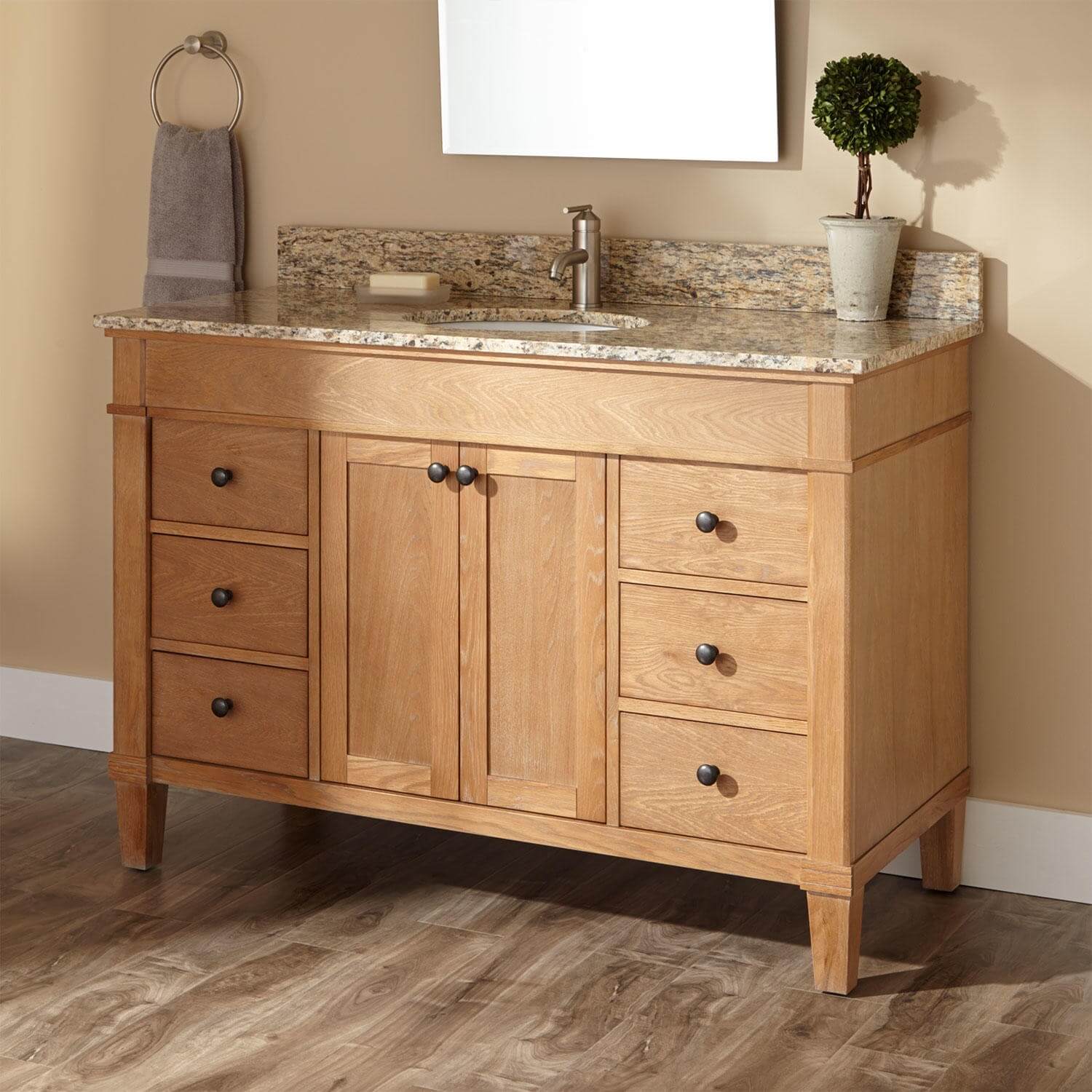Types of Wood Bathroom Vanity Cabinets

Choosing the right wood for your bathroom vanity is a significant decision, impacting both its aesthetic appeal and durability. Wood species offer unique characteristics, influencing the vanity’s overall look, longevity, and cost. This guide explores the most popular wood types for bathroom vanity cabinets, highlighting their strengths, weaknesses, and suitability for bathroom environments.
Oak
Oak is a classic choice for bathroom vanities, renowned for its strength, durability, and distinctive grain pattern. Its hardness makes it resistant to scratches and dents, ideal for high-traffic areas. Oak is also highly water-resistant, making it a suitable choice for humid bathroom environments. However, oak can be susceptible to moisture damage if not properly sealed and maintained.
- Advantages: Durable, water-resistant, distinctive grain pattern, readily available.
- Disadvantages: Can be expensive, requires proper sealing and maintenance.
Maple, Wood bathroom vanity cabinets
Maple is another popular wood choice for bathroom vanities, known for its smooth, fine-grained texture and light color. Its hardness makes it durable and resistant to scratches, while its tight grain pattern makes it less prone to water damage than some other woods. Maple is also highly stainable, allowing for a wide range of finishes. However, maple is less water-resistant than oak and requires proper sealing and maintenance.
- Advantages: Durable, smooth texture, light color, highly stainable.
- Disadvantages: Less water-resistant than oak, requires proper sealing and maintenance.
Cherry
Cherry wood is a popular choice for bathroom vanities due to its rich reddish-brown color and beautiful grain pattern. Its hardness makes it durable and resistant to scratches, while its tight grain pattern makes it relatively water-resistant. Cherry is also highly stainable, allowing for a wide range of finishes. However, cherry is more expensive than oak and maple, and its color can darken over time with exposure to sunlight.
- Advantages: Rich color, beautiful grain pattern, durable, stainable.
- Disadvantages: Expensive, color can darken over time.
Walnut
Walnut is a luxurious wood choice for bathroom vanities, known for its distinctive dark brown color and intricate grain pattern. Its hardness makes it durable and resistant to scratches, while its tight grain pattern makes it relatively water-resistant. Walnut is also highly stainable, allowing for a wide range of finishes. However, walnut is one of the most expensive wood types used for bathroom vanities, and its color can darken over time with exposure to sunlight.
- Advantages: Distinctive dark color, intricate grain pattern, durable, stainable.
- Disadvantages: Expensive, color can darken over time.
Mahogany
Mahogany is a popular choice for bathroom vanities due to its rich reddish-brown color, beautiful grain pattern, and natural resistance to moisture. Its hardness makes it durable and resistant to scratches, while its tight grain pattern makes it less prone to water damage than some other woods. Mahogany is also highly stainable, allowing for a wide range of finishes. However, mahogany is expensive, and its availability is declining due to deforestation concerns.
- Advantages: Rich color, beautiful grain pattern, durable, water-resistant, stainable.
- Disadvantages: Expensive, availability is declining.
Wood Type Comparison Table
| Wood Type | Durability | Water Resistance | Stainability | Aesthetic Appeal | Cost |
|---|---|---|---|---|---|
| Oak | High | High | High | Classic, distinctive grain | Moderate |
| Maple | High | Moderate | High | Smooth, fine-grained | Moderate |
| Cherry | High | Moderate | High | Rich reddish-brown color | High |
| Walnut | High | Moderate | High | Distinctive dark brown color | High |
| Mahogany | High | High | High | Rich reddish-brown color | High |
